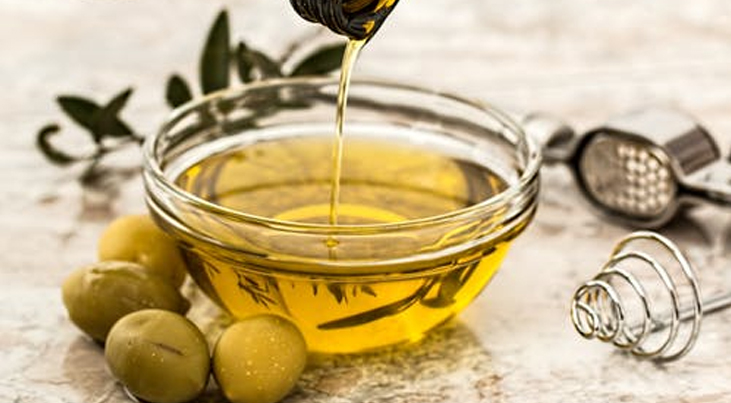India being the fourth largest edible oil consuming country after USA, China and Brazil, we produce 9.3 % of 8.2 million metric ton of world oilseeds. With groundnut, castor seed, sesame, rapeseed and mustard, linseed, Soybean, sunflower, Niger seed and safflower oil, India has also started importing essential oilseeds for producing oils in the country itself. Indian edible oil companies have now started entering the fortified oil segment where these oils have the presence of vitamin content like A, D and E. Sectors like hospitality do bulk purchase and general household purchase oil units like 1 litre and 2 litre pouches or 5 litres cans. Rising demand for hygiene with nutrition and health trends is driving demand for branded oil in the market. Consumers prefer rigid transparent pack that enables them to see & feel quality of oil as far as health safety, hygiene and product freshness is concerned. A package is indeed a vehicle of safety that achieves the objective of delivering safe, wholesome, nutritious food to the consumer. To safeguard the health of the consumer and the society at large, Packaging Laws and Regulations have been introduced by the Government. The Packaging Laws and Regulations for edible oil falls under ‘The Edible Oil Packaging Order, 1998’. According to this act, the edible oil should be packed hygienically in quality packaging material.
Though 2% of urban housewives favour trying new packed product, 41 % of all the housewives are still brand loyal. This factor emphasis on branding and shelf appeal of the edible oil packaging. The other imperative factors affecting the quality of packed oil still remains constant-
- Dissolved oxygen in the oil
- Light passes through containers and activates the oxidation process
- Autocatalytic oxidation
- Temperature & Humidity during storage
- Migration of substances from the container to the
Every edible oil carries its own flavour and pungency which should be maintained thoroughly. Excessive sunlight tends to accelerate rancidity in oil and bad storage can lead to foul smell and off-flavour development in oil. To resolve these problems, manufacturers pack oil in the containers having inert gases like argon and nitrogen that provides an optimal product storage in several production steps during storage and bottling. The oil packaging should be both leak-proof and transport-worthy as the nature of the packaging material has a notable influence on oil quality.
The quantity of oil changes with the type of packaging material used in oil packaging.
- Flexible Nylon Pouch has good substrate and heat seal property and it is eventually lighter in weight and economical that any other container. It prevents oil oxidation but has spillage issues while refilling, needs more shelf space and it absorbs printing ink to dissolve in the oil. This packaging material gives 33 Lac MT of oil quantity in the container.
- Due to its good shelf life, Tin has been substituted by alternates. It possess spillage issues and it absorbs printing ink to dissolve in the oil. This packaging material gives 40 Lac MT of oil quantity in the container.
HDPE Jar container for oil can be customized in different shapes and size. It has good moisture barrier and impact strength. It is non-transparent and so the opacity kills ‘feel good factor’ and gives feel of ‘non-food’ pack. This packaging material gives 15 L: 6 Lac MT of oil quantity in the container.
- Tetrapack sterilizes the container as it has sterile filling inside. But, it has limited pack size option without shape flexibility. This packaging material gives 0.50 Lac MT of oil quantity in the container.
- PET i.e. polyethylene terephthalate bottles assures excellent quality and meets USFDS/FU/BIS regulations. This packaging material gives 7 Lac MT of oil quantity in the container.
The salient features of ‘The Edible Oil Packaging Order, 1998’ are as followed:-
- Edible oils including edible mustard oil will be allowed to be sold only in packed form from 15th December, 1998.
- Packers will have to register themselves with a registering authority.
- The packer will have to have his own analytical facilities or adequate arrangements for testing the samples of edible oils to the satisfaction of the Government.
- Only oils which conform to the standards of quality as specified in the Prevention of Food Adulteration Act, 1954 and Rules made there under will be allowed to be packed.
- Each container or pack will have to show all relevant particulars so that the consumer is not misled, so also the identity of the packer becomes clear.
- Edible oils shall be packed in conformity with the Standards of Weights and Measures (Packaged Commodities) Rules, 1977, and the Prevention of Food Adulteration Act, 1954 and Rules made there under.
- The State Governments will have power to relax any requirement of the packaging order for meeting special circumstances.
To conclude to this blog post, we would say that following the standards and regulations of edible oil packaging is very important. If you too belong to edible oil packaging industry and find yourself stuck in filling, capping, labelling and other sealing processing dilemma, then we have got you covered. Contact us and expect the best ever packaging and processing services from NPM Machinery solutions.

